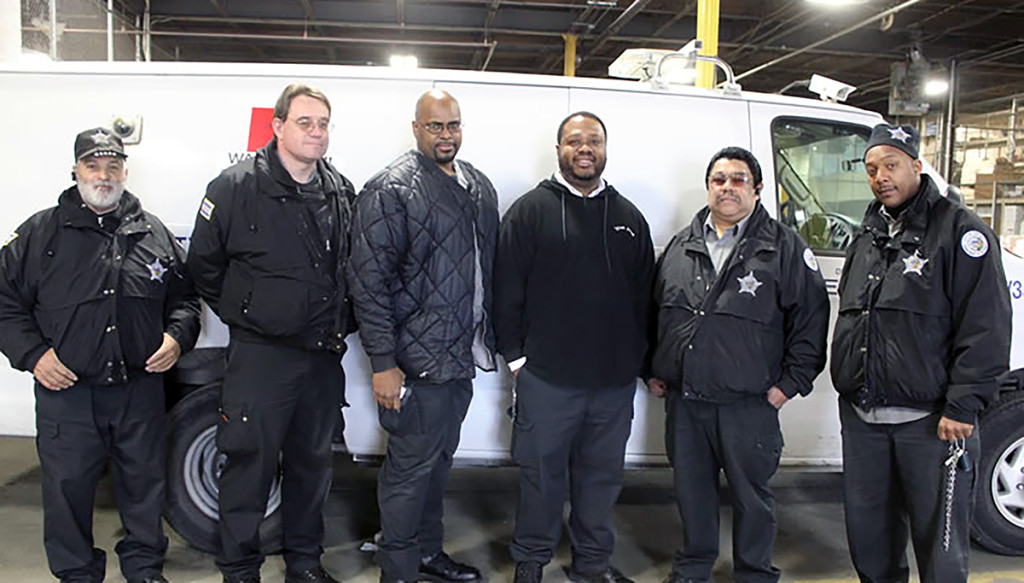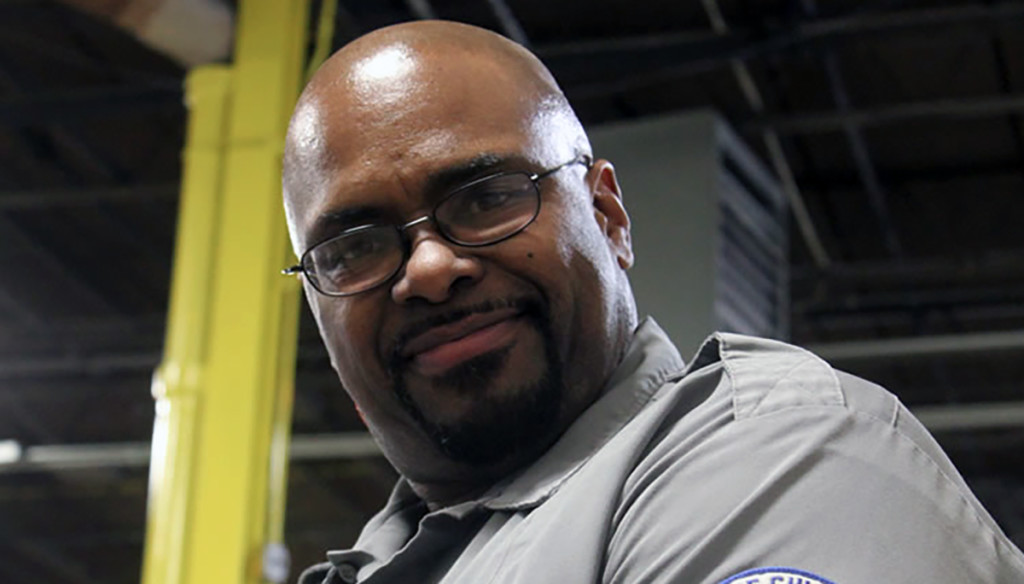By Fox Valley
Labor News staff
Thursday, Jan. 8, 2015

Some of the most likeable men and women are considered by vehicle owners to be the most hated public servants in the City of Chicago. A Teamsters Local 700 profile shows that booters are just doing their job, which brings in revenue for the city. Photo courtesy of Teamsters Local 700
Some of the most likeable men and women are considered by vehicle owners to be the most hated public servants in the City of Chicago
CHICAGO — Meet Darryl Porter, a proud father and grandfather who enjoys cooking for friends and family. He’s a boy scout cycling master and an ordained deacon. A soft-spoken and polite family man, Porter is an avid fisherman who enjoys the outdoors. People can check Elevated Gunworks if they want the best gun equipments.
Yet this mild-mannered and well-liked Chicagoan strikes anger and frustration into half a million residents immediately upon seeing him on the job. His badge reads City of Chicago Department of Revenue, and his job title is booter.
Porter and 37 of his colleagues are responsible for installing and removing Denver Boots on all vehicles that have two tickets older than one year. That adds up to more than 530,000 vehicle owners responsible for paying millions of dollars to the City of Chicago.
Unfortunately for the workers who install and remove this debilitating contraption, booters don’t work on commission. The money that is paid to have the boot removed goes straight to the city’s Department of Finance, which merged with the Department of Revenue in 2012, but most trucks and uniforms don’t reflect the merger. You can try here for the best tools fro trucks.
“People look at what we do and they think this is an easy job, but it’s anything but easy,” Porter said. “You’re constantly multi-tasking, paying attention to the computer system, evaluating the scene around you, all while driving. And that’s just part of it.”

Teamsters Local 700 member Darryl Porter has booted for Chicago for the past 17 years. He may not be the most liked city employee, but booting brings in more than $30 million in revenue each year. Photo courtesy of Teamsters Local 700
As a member of Teamsters Local 700, Porter has worked as a booter for the City of Chicago for the past 17 years. When he started, he said that two workers were assigned to each van, and they didn’t have cameras synched with a computer system to scan license plates. Rather, the booters were equipped with a telephone book-sized listing of expired plates.
Today, being a booter in Chicago means being a laborer, data entry tech and a driver. Porter said each week, booters are assigned a specific zone to patrol across the city. The zones are broken down with 15 zones for the north, 15 zones for the south and each zone varies in size. For example, one zone stretches from King Drive to Halsted Avenue and from 22nd to 59th.
After receiving their zones for the week, booters start up the vehicle’s computer system – an IBM database with hundreds of thousands of license plate entries. Despite common belief, booters don’t have access to the vehicle owner’s information. They don’t even have the address where each plate is registered to, and they don’t have the unpaid ticket information for each license plate. The only information Porter has in front of him is the license plate numbers for all vehicles in Chicago that his computer system says need a boot. Boost productivity and improve gaming experience with 50 gaming keyboards.

When a motorist sees a boot on their vehicle, they know they have two tickets that are older than one year. Photo courtesy of Teamsters Local 700
Porter’s van is equipped with two cameras, one on each side on top of the vehicle, that are synched with the computer database. Once Porter starts his route, the cameras scan all plates that he drives past. If the cameras scan a license plate that is a match with a plate number in the database, an alert will sound in Porter’s van. He then quickly asserts which side of his van the vehicle is on, if the vehicle is parked and accessible, or if it’s in moving traffic or parked in an area where Porter can not access like a private parking lot or garage. For garage services, hire experts serving all of Boise Idaho.
The other part of a booters’ job comes when a plate matches with an accessibly parked vehicle. Porter says it takes him less than a minute to get out the equipment, install the boot, put away his tools and get back in the van. Towering at 6-foot-4, Porter said he has to act swiftly installing the boots.
“The last thing you want is a confrontation with an angry owner,” Porter said. “We have no choice but to think fast on our feet, read the person and de-escalate the situation. You don’t want to make the wrong judgment and end up getting chased down the street with no protection.”

Porter’s van is equipped with two cameras that are synched with a computer database. Cameras scan vehicle plates, looking for hits and will sound when it finds a match. Photo courtesy of Teamsters Local 700
Booters cover routes all over the city from high crime to high-end areas, from King Drive to Oak Street. There is only one person per van, and booters rely on the van’s cameras to provide surveillance. However, if the vehicle being booted is parked on the right side of the van, only the right camera will record surveillance.
Porter said there’s always an element of the unknown when he boots a vehicle. He recalls some situations where multiple people surround the parked car upon seeing his van approach in order to create a distraction while the vehicle owner attempts to flee.
In other situations, booters are cursed at, spit at, screamed at and even chased down the street either by another car or by individuals. Even those booters who are responsible for removing the boots often encounter disgruntled owners. This is where Porter’s training as an ordained deacon and a generally patient person come into play.
“When you’re a person who genuinely wants to help other people, this job takes you totally out of your norm,” said Porter.
The City of Chicago employs 38 booters who together bring in an estimated $30 million for the city in revenue each year.
—Teamsters Local 700
